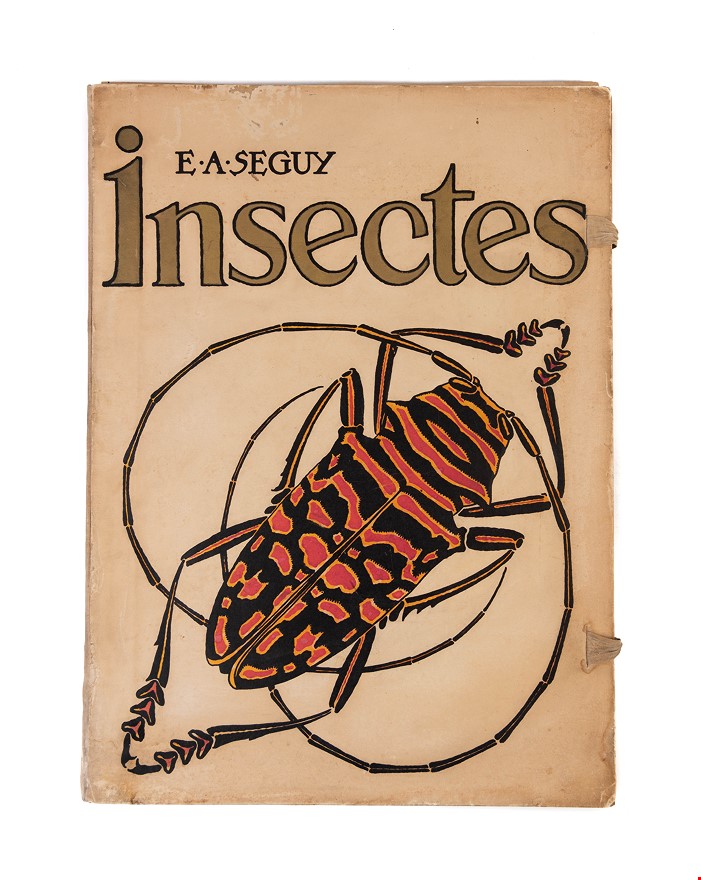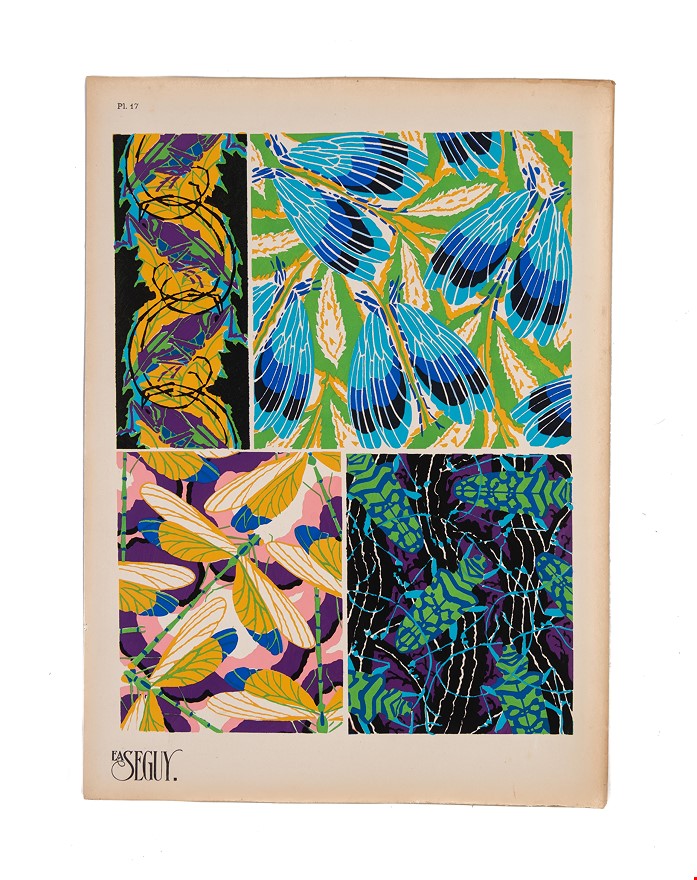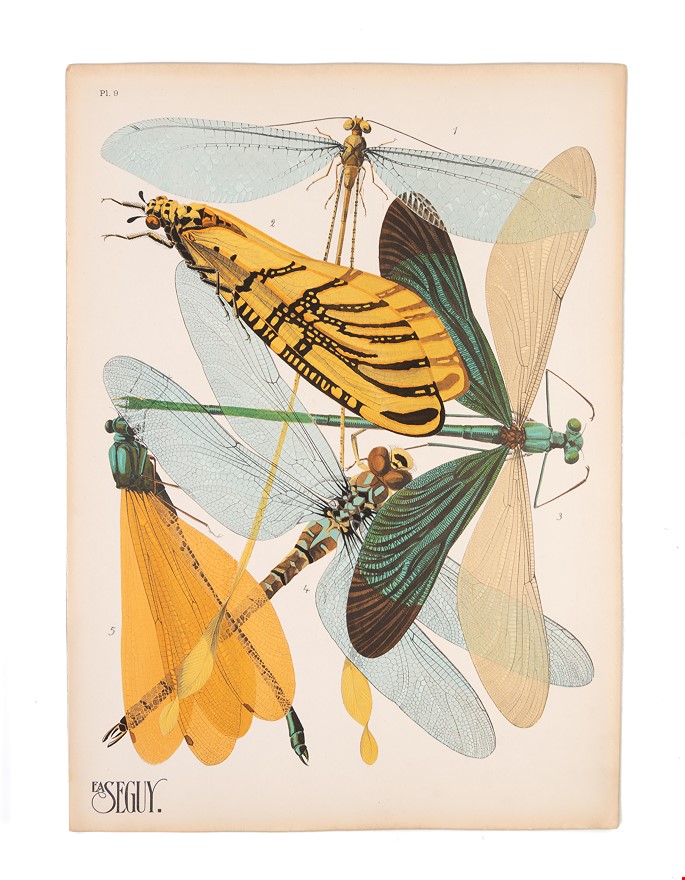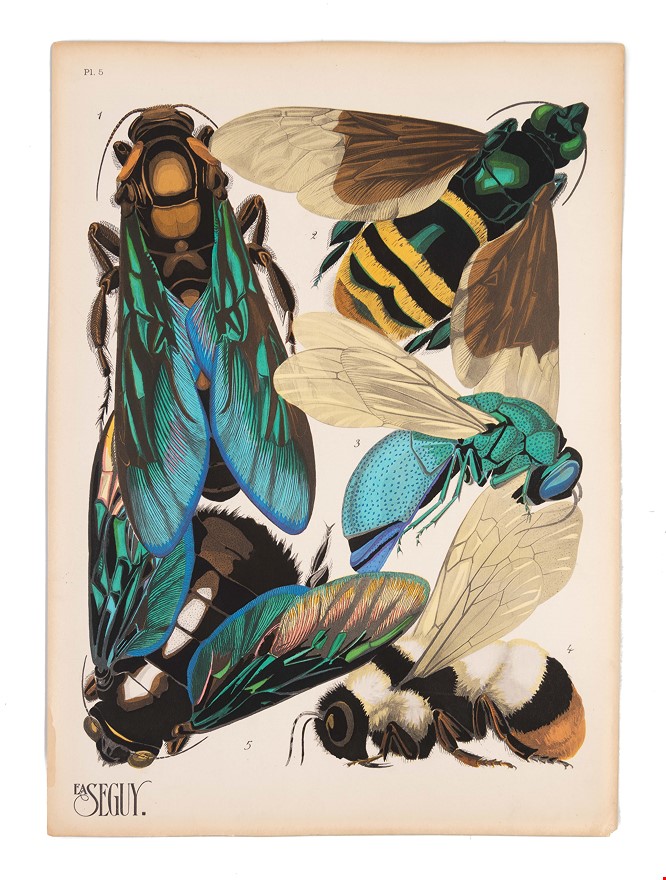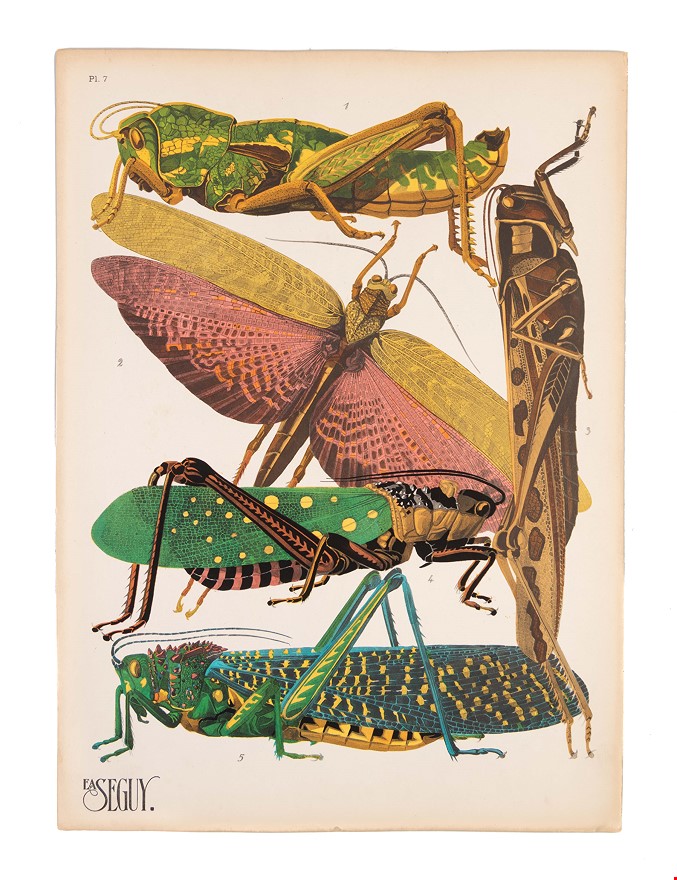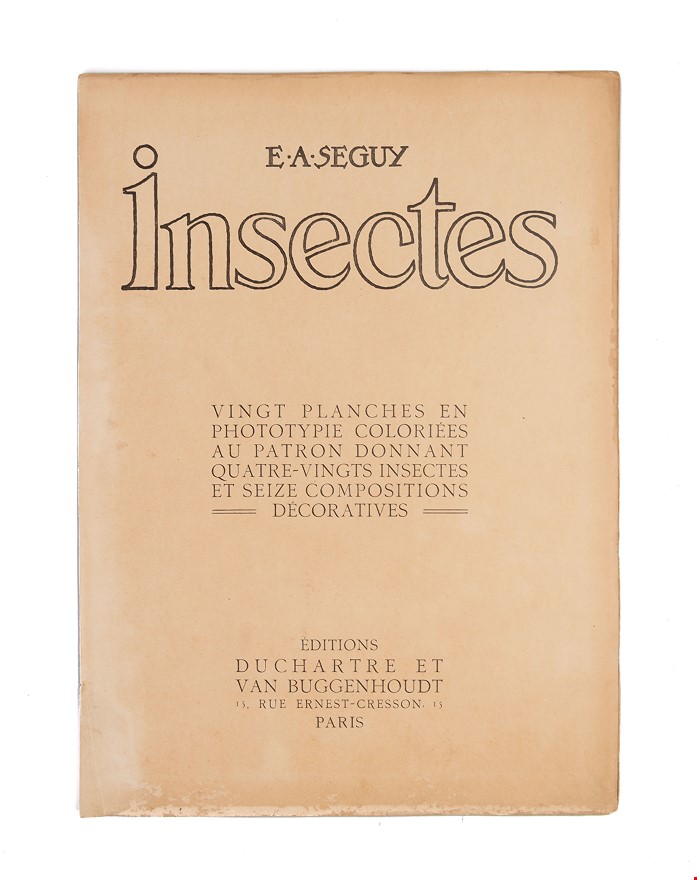Insectes. Vingt planches en phototypie coloriées au patron donnant quatre-vingts insectes et seize compositions décoratives.
SÉGUY E. A.; POCHOIR ([1929])
£12500.00
ENTOMOLOGY AS DESIGN
20 pochoir-coloured plates with a collotype key printed in dark grey, of 80 insects and 16 decorative compositions after E.A. Séguy. Fol., 33.5x45cm, 20 plates + 4pp introduction by Séguy, unbound, in pochoir-decorated portfolio with ribbons. Paris, Duchartre et Van Buggenhoudt.
Very good, spine of portfolio lightly rubbed, some browning to edges of leaves, some light chipping to edges, plates unaffected.
Émile-Allain Séguy, born 1877 and a student of the School of Decorative Arts in Paris, was a bright light of early 20th century decorative design. While serving as what we would, in modern parlance, refer to as the 'creative consultant’ for the window displays of the pioneering Printemps department stores, Séguy published several portfolios of prints which combined the sinuous Art Nouveau line with the striking palette of Fauvism. Each portfolio was coloured by hand using the pochoir technique of brushing pigment through aluminium or zinc stencils; Seguy intended for his designs to be applied to wallpapers and textiles, which no doubt influenced and was influenced by his time with Printemps, and in doing this he brought the pochoir technique full circle to its origins in Japanese Katagami stencils used for dying kimono fabric.
Séguy’s most successful and influential works were his later pochoir portfolios, Papillon (1928) and Insectes (1929), which combined the Art Nouveau and Art Deco styles with a palette and layout which hinted at scientific accuracy, only to dive headlong into a purely decorative excess of colour and form in the final plates. Bees, wasps, locusts, butterflies, dragonflies, and grasshoppers are all depicted in great detail, each enlarged to almost alarming proportions, overlapping one another as if in competition for the viewers' attention; the bright and striking colours of the subjects, particularly the iridescent wings and carapaces, bring out the very best qualities of the pochoir technique.
Séguy’s nod towards scientific illustration reflected the inspiration he drew from the natural world, a 'repertoire of forms and of colours of a sumptuous richness and a surprising variety' (Séguy, from the introduction to Insectes), and was part of an attempt to create a modern decorative form which celebrated scientific endeavour and the industrial spirit of the age. He drew a direct comparison between technological innovation and entomology, comparing the 'prodigious development of the mechanical arts', which created a taste for 'the beauty of an airplane hull, of a transatlantique [cruise liner], of a locomotive' to the naturally formed beauty of insects 'mechanical marvels in which the parts fit together with a precision, a harmony and an intelligence that emerges as soon as one looks through a magnifying glass' (ibid.)
Stock Code: 239436
